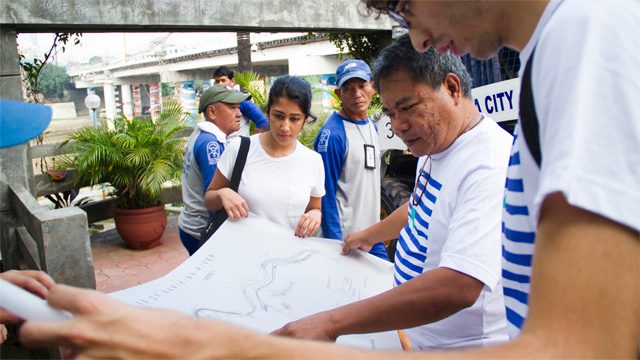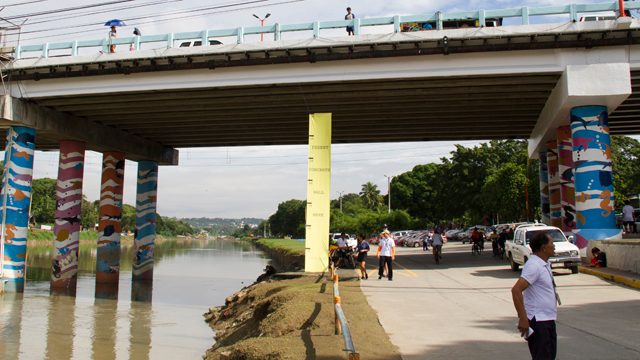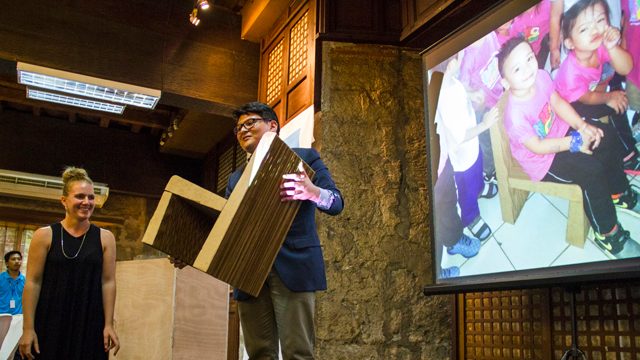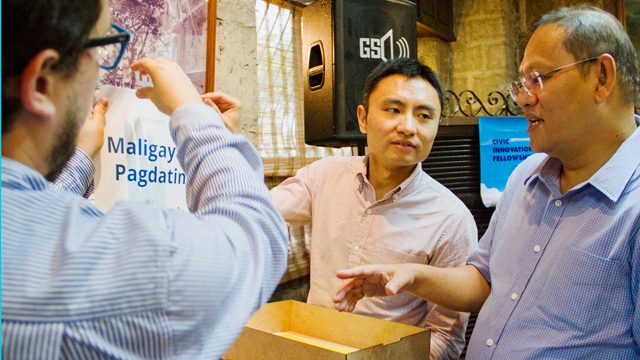SUMMARY
This is AI generated summarization, which may have errors. For context, always refer to the full article.

MANILA, Philippines – If given all the resources you need in two weeks, what will you change in the world?
Because of its location, Marikina City is prone to both natural disasters – floods due to overflowing rivers or earthquakes – and man-made problems – lack of maternal healthcare or the impermanence of preschool daycare centers.
All these and more are challenges Marikina residents face every day. All these they hope will change soon.
Five by Five, a Filipino-founded international open innovation group in Paris, organized Metro Manila Civic Innovation Fellowship and picked Marikina, hoping a different perspective may alleviate some of the blight affecting the city residents.
‘Open innovation’ is a collaborative and decentralized solution-innovation approach wherein the product or process design is made available for public use and further development.
Seven city innovators from all over the world flew in to the Philippines to hack Marikina City’s biggest problems through open innovation.
With ‘outsider looking in’ point of view, these innovators or fellows will immerse themselves, distill, then churn out implementable ideas.
Fellows were handpicked through series of screenings based on their technical skill sets, experience, interests, and thinking process.
Preserving Marikina’s identity
Often struck by natural calamities such as earthquakes and massive river floods, Marikina’s original plan was to put up a 7-meter tall concrete river wall to reduce disaster risks. Residents were reluctant of this development as this would hurt the 38-kilometer long Marikina River’s natural heritage.

Khyati Saraf (landscape designer from India), Niklas Agarwal (environmental coordinator from Canada) and John Jay Amar (landscape architect from the Philippines) proposed ecologically-sound alternatives for the river park’s long-term sustainability while preserving its heritage value.
The team envisioned a wall-less and walkable river garden park design where large stones are used as overflow barriers and native horticultural crops such as vetiver grass as soil stabilizers – all of these to control river floods while preserving the river’s biodiversity and natural scenery.
Re-designing preschools afloat
Being prone to natural hazards, Marikina schools are often relocated due to safety concerns. Adapting to the challenge, schools’ permanence continues to rise as funds to repair public schools are often cut.

The solution pitched by architects Lily Summers (USA) and Steven Chua (Philippines) was to create air-tight storage boxes which could be used to keep school materials and dismantlable chairs made from corrugated cardboard.
In the long-run, they proposed constructing earthquake-resistant school buildings which could also lift itself up during floods up to 4 meters in height.
Patient-friendly healthcare
In Marikina City, mothers and their children are given free supplemental healthcare during the child’s first five years. However due to continuously increasing population, just like most healthcare centers in the country, the patients outnumber the available healthcare providers.

From a process-centered process flow, Pablo Fernández Vallejo (UX designer from Argentina) and Roy Rao (operations strategist from China) sought the need to enhance the healthcare centers’ operations through a patient-centric approach.
The team developed the ‘Alaga Kit,’ a set of visual materials composed of priority queueing numbers, area sign posters and staff nameplates designed to encourage the patients to follow instructions and lessen their waiting time.
‘Reflecting the constituents’ needs’
Mentored by international experts and guided by government offices, the fellows immersed themselves through oculars and face-to-face interviews with Marikina residents for two weeks while creating the prototypes they presented during the demo day last September 29.
“What they presented to us were practical solutions that reflected our constituents’ needs,” said Marikina City Mayor Marcelino Teodoro, referring to the proposals presented during the demo day.
Marikina City looks forward to implementing the proposed projects and for more collaborations that render new perspectives for the government to solve its problems. – Rappler.com
Add a comment
How does this make you feel?
There are no comments yet. Add your comment to start the conversation.